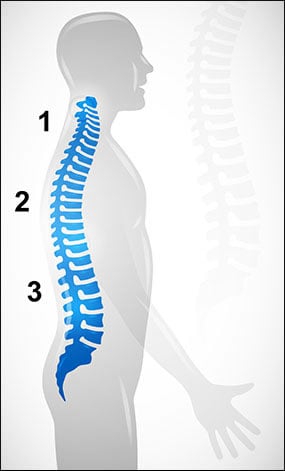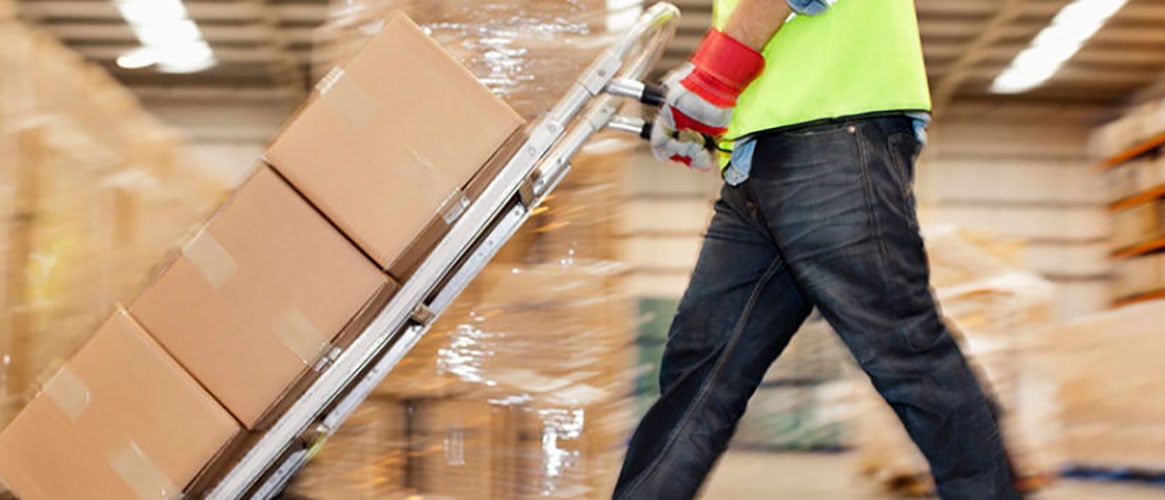Eighty percent of us will experience lower back pain at some point in our lives. In fact, lower back pain is one of the leading reasons why people miss work and it's the most common cause of job-related disabilities. The Occupational Safety and Health Administration (OSHA) says acute back injuries suffered at work often result from improper lifting techniques and/or lifting and carrying something that’s too heavy. By knowing what to lift and how to safely lift it, you and your employees can reduce the risk of injury.
What your employees need to know about safe lifting and how it helps the back

The most effective technique is to avoid lifting whenever possible. In many cases, equipment is available that can either fully automate or assist with lifting and handling demands. Examples include hand trucks, dollies, pallet jacks, and forklifts. Using this equipment helps take stress off the back and lessen the risk of injury.
However, there may be times when no other option exists, and your employees must lift objects manually. Ensuring your employees use the proper lifting technique helps reduce the amount of stress on each person’s back.
What your employees need to do to lift safely
Prior to making the lift, employees should:
- Use the proper Personal Protective Equipment (PPE).
- Perform stretches to warm up their muscles.
- Check the weight of the load.
- See if the load can be broken down into smaller parts.
- Determine where and how to hold the load, and ask for assistance for heavy or awkward loads.
- Ensure the path of travel as well as where the load will be set down is clear of obstructions.
When it’s time to lift an object, keep it close. The best way to handle any object is to:
- Keep the object in front,
- At waist level
- As close to the body as possible.
There is a point just below the belly button that is the body’s center of gravity. When it comes to lifting and materials handling, our bodies work best when we keep the load at this central position.
If we move the load away from this center of gravity, we increase the physical effort needed to support and stabilize the body. Additional effort is then necessary to lift or move objects. This added stress makes the back work harder and increases the chance of injury.
Keep the curves. The spine is the primary structural column of the human body. The picture shows the spine in its natural alignment. You will notice three curves—one in the neck, one in the upper back, and one in the lower back. You want to keep this alignment when lifting an object.
If you bend at the hips and knees, keep your feet flat on the ground, hold a wider stance with one foot slightly in front of the other, and look straight ahead (instead of down at the item being lifted). This will help ensure the spine remains properly aligned. Workers are then able to use the power in their leg muscles to lift, taking pressure off the back. In contrast, bending over at the waist takes the spine out of the natural alignment and increases the amount of strain on the back.
What to cover at your safety meeting on safe lifting and back injuries
Discuss with your employees the types of material that the job requires them to lift, and the risk of injury that comes with improper lifting.
Demonstrate the proper lifting technique. You can use the Hazard Checklist: Lifting Techniques to evaluate employees.
Lastly, provide hand trucks and other lifting aids and encourage your employees to use this equipment whenever possible. Be sure to show them where it’s stored and remind them to return items to the proper place so others know where to find this equipment.
Back injuries don’t always happen right away. Often, the wear and tear that comes with improper lifting develops over time. Talk to your employees today about keeping the spine aligned naturally and the lifted material close to the body. While using the wrong technique might not cause any pain right away, it could lead the way for future trouble.

